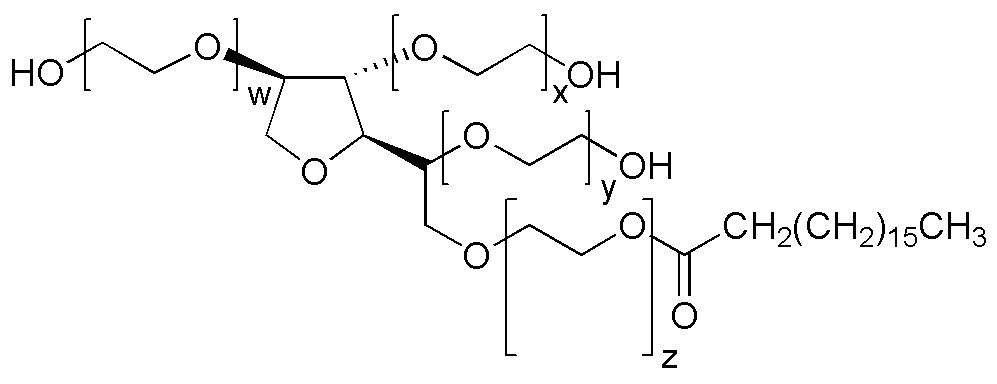Tween 60 is widely utilized in research focused on:
- Pharmaceutical Formulations: It serves as an emulsifier in drug formulations, enhancing the solubility and stability of active ingredients, which is crucial for oral and injectable medications.
- Cosmetic Products: Commonly found in lotions and creams, it helps to blend oil and water components, improving texture and skin feel, making it a favorite among formulators in the beauty industry.
- Food Industry: Used as a food additive, it acts as a stabilizer in products like salad dressings and sauces, preventing separation and ensuring a consistent texture.
- Biotechnology: In laboratory settings, it is employed to stabilize proteins and enzymes during storage and processing, which is essential for various research applications and assays.
- Paints and Coatings: Tween 60 is used to improve the dispersion of pigments and additives in water-based paints, enhancing the quality and durability of the final product.
General Information
Properties
Safety and Regulations
Applications
Tween 60 is widely utilized in research focused on:
- Pharmaceutical Formulations: It serves as an emulsifier in drug formulations, enhancing the solubility and stability of active ingredients, which is crucial for oral and injectable medications.
- Cosmetic Products: Commonly found in lotions and creams, it helps to blend oil and water components, improving texture and skin feel, making it a favorite among formulators in the beauty industry.
- Food Industry: Used as a food additive, it acts as a stabilizer in products like salad dressings and sauces, preventing separation and ensuring a consistent texture.
- Biotechnology: In laboratory settings, it is employed to stabilize proteins and enzymes during storage and processing, which is essential for various research applications and assays.
- Paints and Coatings: Tween 60 is used to improve the dispersion of pigments and additives in water-based paints, enhancing the quality and durability of the final product.
Documents
Safety Data Sheets (SDS)
The SDS provides comprehensive safety information on handling, storage, and disposal of the product.
Product Specification (PS)
The PS provides a comprehensive breakdown of the product’s properties, including chemical composition, physical state, purity, and storage requirements. It also details acceptable quality ranges and the product's intended applications.
Certificates of Analysis (COA)
Search for Certificates of Analysis (COA) by entering the products Lot Number. Lot and Batch Numbers can be found on a product’s label following the words ‘Lot’ or ‘Batch’.
*Catalog Number
*Lot Number
Certificates Of Origin (COO)
This COO confirms the country where the product was manufactured, and also details the materials and components used in it and whether it is derived from natural, synthetic, or other specific sources. This certificate may be required for customs, trade, and regulatory compliance.
*Catalog Number
*Lot Number
Safety Data Sheets (SDS)
The SDS provides comprehensive safety information on handling, storage, and disposal of the product.
DownloadProduct Specification (PS)
The PS provides a comprehensive breakdown of the product’s properties, including chemical composition, physical state, purity, and storage requirements. It also details acceptable quality ranges and the product's intended applications.
DownloadCertificates of Analysis (COA)
Search for Certificates of Analysis (COA) by entering the products Lot Number. Lot and Batch Numbers can be found on a product’s label following the words ‘Lot’ or ‘Batch’.
*Catalog Number
*Lot Number
Certificates Of Origin (COO)
This COO confirms the country where the product was manufactured, and also details the materials and components used in it and whether it is derived from natural, synthetic, or other specific sources. This certificate may be required for customs, trade, and regulatory compliance.

